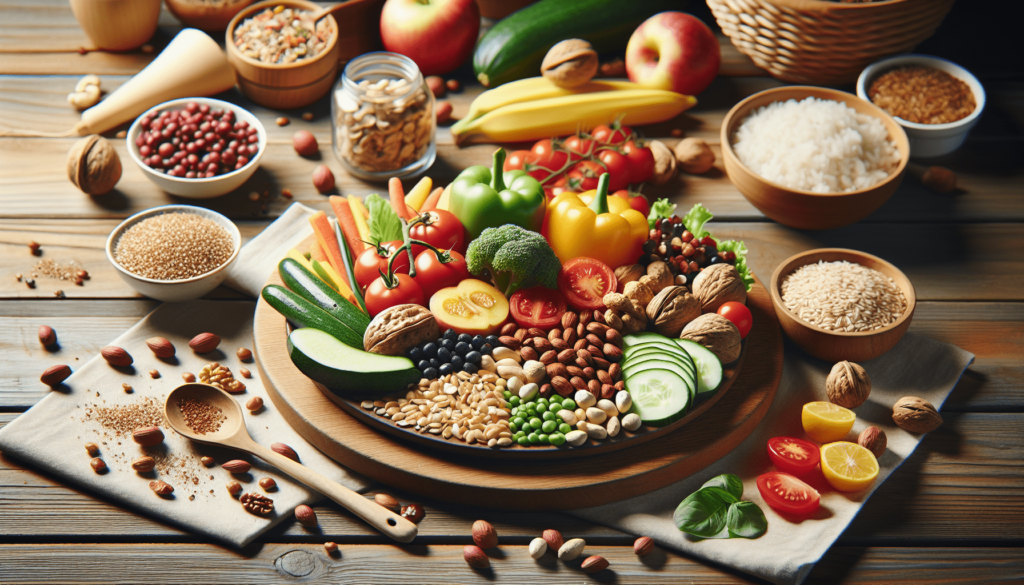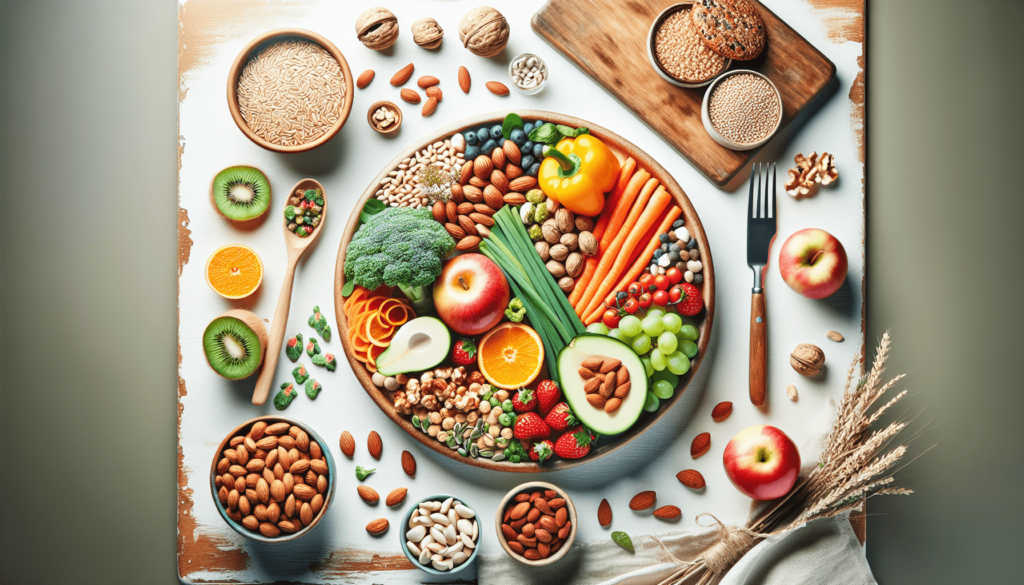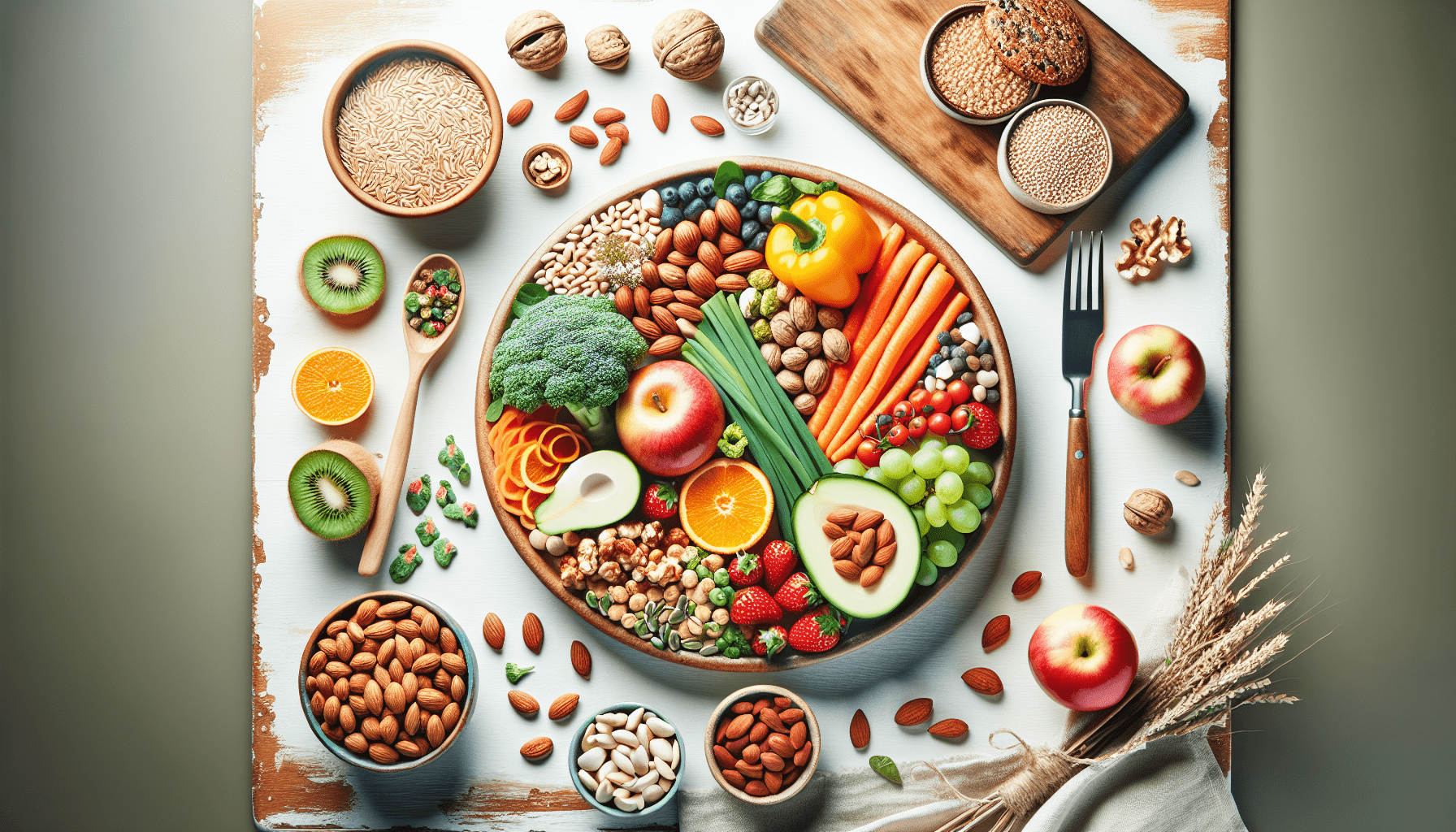Welcome to the “Beginner’s Guide to Allergy-Friendly Nutrition and Meal Planning,” your go-to resource for navigating the world of food sensitivities with ease. Whether you’re managing your own dietary restrictions or cooking for someone with allergies, this guide offers practical tips, delicious recipes, and expert advice to help you create safe and satisfying meals. You’ll discover how to identify allergen-free ingredients, organize your kitchen, and plan balanced menus that everyone can enjoy. Embrace a healthier, happier lifestyle with confidence and creativity by making allergy-friendly nutrition a seamless part of your daily routine. Have you ever wondered how you can navigate the tricky waters of allergy-friendly nutrition and meal planning? If you’re a beginner, the world of food allergies might seem overwhelming, but don’t worry—this guide is designed to offer friendly, practical advice to make your journey smoother and more enjoyable.

Understanding Food Allergies
What Are Food Allergies?
Food allergies occur when your body’s immune system mistakenly identifies certain proteins in food as harmful. This leads to an allergic reaction, which can range from mild (such as hives or stomach discomfort) to severe (such as anaphylaxis). Knowing what food allergies are and how they impact your life is the first step in managing them.
Common Allergens
There are eight common allergens responsible for the majority of food allergies:
| Allergen | Common Foods Containing the Allergen |
|---|---|
| Milk | Dairy products, cheese, yogurt, butter |
| Eggs | Baked goods, mayo, processed foods |
| Peanuts | Peanut butter, peanut oil, baked goods |
| Tree nuts | Almonds, walnuts, cashews, nut oils |
| Fish | Salmon, tuna, tilapia |
| Shellfish | Shrimp, crab, lobster |
| Soy | Tofu, soy milk, soy sauce |
| Wheat | Bread, pasta, cereals, baked goods |
Symptoms and Diagnosing Food Allergies
Food allergy symptoms can vary but often include:
- Hives or skin rash
- Swelling of lips, tongue, or throat
- Difficulty breathing
- Stomach pain, nausea, or vomiting
If you suspect you have a food allergy, consult your healthcare provider. They can conduct tests like skin prick tests or blood tests to diagnose and identify your specific allergies.
Allergy-Friendly Nutrition Basics
Reading Labels
To make sure you avoid allergens, you must become a pro at reading food labels. The FDA requires that packaged foods list common allergens explicitly. Look for phrases like “contains milk” or “may contain peanuts” on the label.
Cross-Contamination Risks
Cross-contamination occurs when allergens are transferred from one food to another. This can happen during food preparation or storage. Use separate utensils and cutting boards for allergenic and non-allergenic foods to minimize this risk.
Allergy-Free Alternatives
The good news is that plenty of allergy-free alternatives can replace common allergens while still providing you with balanced nutrition.
- Milk alternatives: Almond milk, soy milk, oat milk
- Egg replacements: Flaxseed meal, applesauce, commercial egg replacers
- Nut alternatives: Sunflower seeds, pumpkin seeds
- Wheat-free grains: Rice, quinoa, oats
Nutritional Balance
Ensuring that your diet is still nutritionally balanced, despite restrictions, can be challenging but is critical. Consult a dietician to help you construct a diet plan that includes all necessary nutrients and vitamins.
Creating an Allergy-Friendly Meal Plan
Initial Steps
- Identify Allergens: Start by writing down all the known allergens you or your family members need to avoid.
- Set Goals: Whether it’s ensuring balanced nutrition or introducing variety, setting clear goals will help guide your meal planning.
Stocking Your Pantry
An allergy-friendly pantry is an essential foundation for quick and easy meal prep. Here are some basics to keep on hand:
| Food Category | Recommended Items |
|---|---|
| Grains & Legumes | Brown rice, quinoa, lentils |
| Snacks | Rice cakes, hummus, fresh fruits |
| Protein sources | Chicken breast, tofu, beans |
| Fruits & Vegetables | Fresh produce, canned vegetables without additives |
| Condiments & Cooking Oils | Olive oil, coconut aminos |
Sample 7-Day Meal Plan
Day 1:
- Breakfast: Smoothie with almond milk, banana, and spinach
- Lunch: Quinoa salad with vegetables and a lemon-tahini dressing
- Dinner: Grilled chicken with steamed broccoli and brown rice
Day 2:
- Breakfast: Oatmeal with fresh berries and a drizzle of honey
- Lunch: Lentil soup with a side of gluten-free bread
- Dinner: Baked salmon with roasted sweet potatoes and green beans
Day 3:
- Breakfast: Coconut yogurt with granola and sliced peaches
- Lunch: Tofu stir-fry with mixed vegetables
- Dinner: Stuffed bell peppers with quinoa and black beans
Day 4:
- Breakfast: Rice cakes with avocado and a sprinkle of sea salt
- Lunch: Chicken salad with mixed greens and a balsamic dressing
- Dinner: Turkey meatballs with zucchini noodles and marinara sauce
Day 5:
- Breakfast: Smoothie bowl with mixed fruits and chia seeds
- Lunch: Sushi rolls with cucumber, avocado, and seaweed
- Dinner: Grilled shrimp with corn on the cob and a side salad
Day 6:
- Breakfast: Gluten-free toast with sunflower seed butter and banana slices
- Lunch: Chickpea curry over basmati rice
- Dinner: Beef stir-fry with snap peas and bell peppers
Day 7:
- Breakfast: Smoothie with soy milk, mixed fruits, and flaxseeds
- Lunch: Hummus wrap with grilled vegetables
- Dinner: Baked cod with quinoa and steamed asparagus
Tips and Tricks for Successful Meal Planning
Variety is Key
Eating the same meal repeatedly can lead to nutritional gaps and boredom. Aim to rotate proteins, grains, and vegetables to keep meals interesting and balanced.
Batch Cooking
Take advantage of batch cooking to make your week easier. Cook enough for multiple meals and store them in the fridge or freezer. For example, prepare a large batch of quinoa or roast a variety of vegetables to use throughout the week.
Use Seasonals
Using seasonal produce not only saves you money but also ensures that you’re eating the freshest, most nutrient-rich foods available. Seasonal guides can help you plan meals around what’s currently in season in your area.

Dealing with Eating Out
Call Ahead
When dining out, always call the restaurant ahead of time to discuss your dietary restrictions. Many establishments are more than willing to accommodate your needs if given advance notice.
Choose Allergy-Friendly Restaurants
Look for restaurants with a reputation for accommodating food allergies. Some even have dedicated sections of the menu that cater to common dietary restrictions.
Simplify Menu Choices
Opt for simple dishes that are less likely to contain hidden allergens. Grilled meats, plain vegetables, and salads with simple dressings are usually safer bets.
Involving Your Family
Educate and Inform
It’s essential to educate your family about food allergies so they can help you avoid allergens. Teach them how to read labels and recognize symptoms of allergic reactions.
Share the Responsibility
Make meal planning and preparation a family affair. Assign different tasks to family members to lighten the load and foster a supportive environment.
Kid-Friendly Meals
Creating allergy-friendly meals that kids will love can be challenging. Focus on fun, appealing foods like homemade chicken nuggets with a gluten-free coating or dairy-free mac and cheese.
Managing Social Situations
Potlucks and Parties
Always let the host know about your food allergies ahead of time. Offer to bring a dish that you know is safe for you to eat, which also allows others to try allergy-friendly options.
Communicating Your Needs
Be clear and assertive when communicating your dietary needs to others. It’s crucial for the safety of your health that people understand your restrictions.
Navigating Buffets
At buffet-style gatherings, go through the serving line first if possible. This minimizes the risk of cross-contamination from shared serving utensils.
Support and Resources
Online Communities
Online forums and social media groups can provide invaluable support and share recipes, tips, and experiences. Connecting with others who live with food allergies can make you feel less isolated.
Consult Professionals
Don’t hesitate to seek help from dietitians, allergists, and nutritionists. These professionals can offer tailored advice and ensure you’re meeting all your nutritional needs despite dietary restrictions.
Staying Updated
Food allergy research is constantly evolving. Stay informed about new findings, treatments, and foods through reputable sources like medical journals and allergy organizations.
Conclusion
Embarking on a journey toward allergy-friendly nutrition and meal planning may seem challenging at first, but with the right information and a bit of practice, you’ll soon find it second nature. Remember, the key is to stay informed, be diligent about reading labels, and always have a plan. Your health and well-being are worth the effort, and with this guide, you’re well on your way to becoming an expert in managing food allergies. So go ahead, take that first step, and enjoy discovering a whole new world of delicious, allergy-friendly meals!
